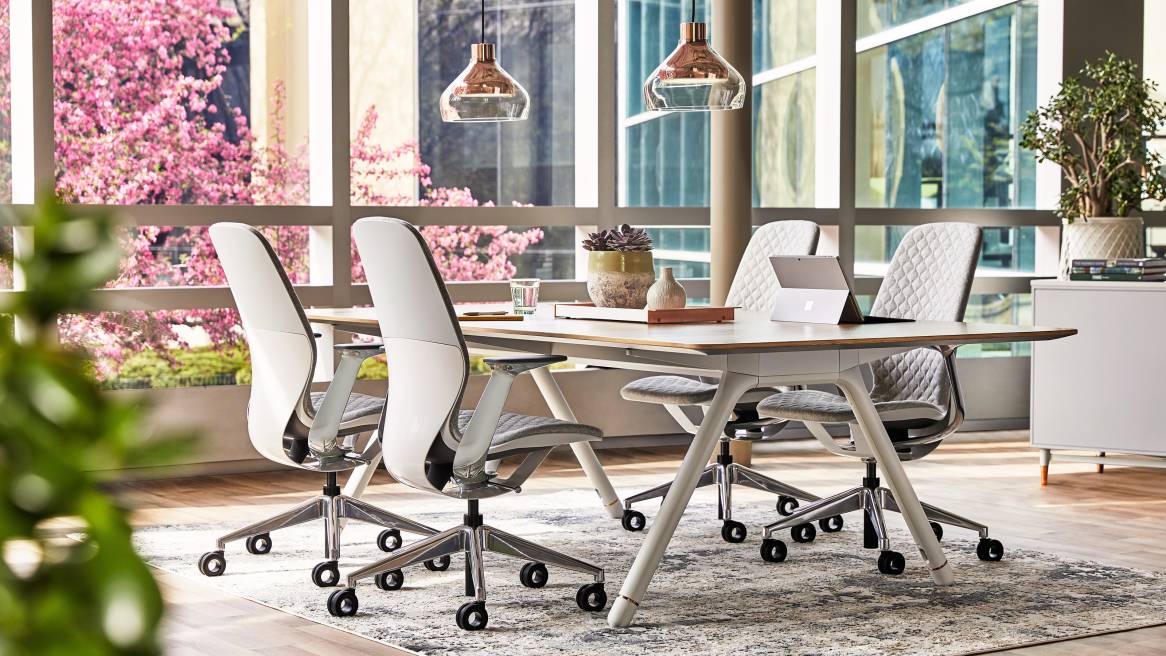Innovation Redefined
How a Team of Disruptive Thinkers Changed the Way We Sit
“Thoughtful simplicity is hard. A key principle in design is to distill things down to their essence and understand what is absolutely necessary as a genesis of a problem.”
James LudwigSteelcase Vice President, Global Design & Engineering
This is what innovation looks like. A small team, led by Ludwig, made a breakthrough in the making of SILQ, a completely new kind of chair for the workplace. Innovation may appear to some like alchemy, Ludwig notes: a transformation, seemingly through magic. But any magic, he explains, happened by assembling a team of disruptive thinkers that created a new, patent-pending process and a breakthrough innovation.
SILQ is original because its material, shape and construction allows it to respond naturally to the human being sitting in it. It eliminates the machinery typically found underneath most chairs and replaces it with a sleek silhouette and just one adjustment—height.
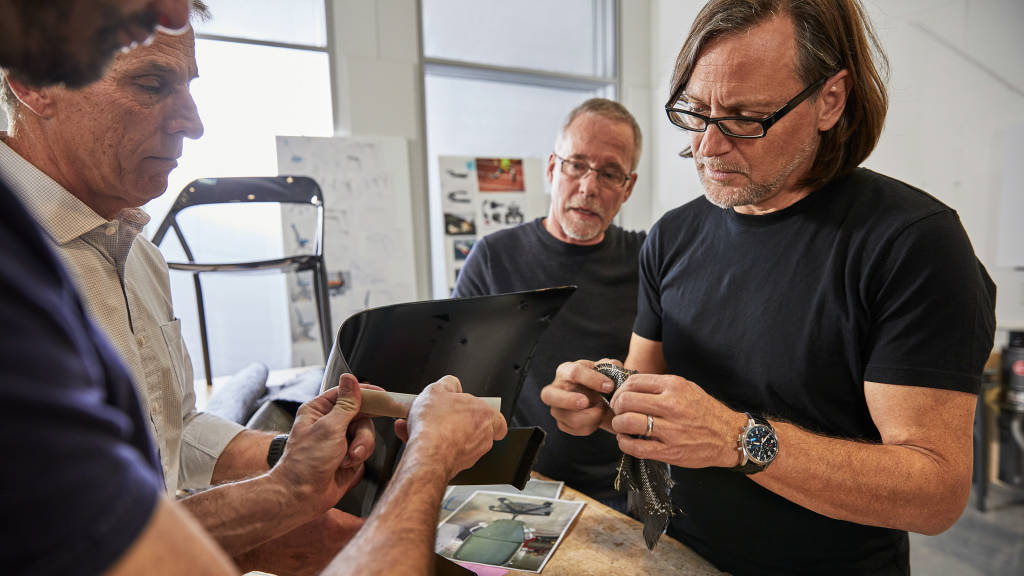
The Team
The team included a mix of fresh ideas and decades of experience. They are led by Ludwig, a tinkerer at heart, who builds robots and works on his small collection of 1958 car and boat engines in his free time. Chief Engineer Kurt Heidmann helped design nuclear submarines long before building furniture. Global Design Director Bruce Smith operated a 40-ton overhead crane and designed custom jet interiors before starting his now 32 years of seating experience at Steelcase. Principal Designer Mark Spoelhof is an amateur race car driver and consummate maker who built his own boat and barn. And, Senior Product Engineer Nick Deevers, who began his own contract engineering company right out of college and loves making things so much his home woodworking space is named “The Shop.” Together, they took a fearless approach to solving this design and engineering puzzle.
EXPLORE SILQ
View more photos and learn more about the innovation, artistry and performance of SILQ.
“We had radical focus and trust.”
The idea behind SILQ came from a sketch Ludwig drew in 2008. The idea was ahead of its time—a simple design that required virtually no adjustments as people shifted more frequently between spaces. Materials, 3D printing, computer-assisted design, molding and other production technologies just hadn’t advanced far enough to help solve the problem, so the project was put on hold. But the idea refused to die. During an annual trek to TED, Ludwig heard a talk by Paralympic sprinter Aimee Mullins and was intrigued by the durability, flexibility and responsiveness of the sprinter’s prosthetic legs. The responsiveness of carbon fiber to an athletes’ movements inspired him. So he consulted Chief Engineer Heidmann and the two decided it was time to go back to work on the sketch from years ago.
“We had some spectacular failures,” says Heidmann. “We had to figure out how to make it strong and simple. I went home more than a few times thinking ‘I don’t know if this is going to work.’”
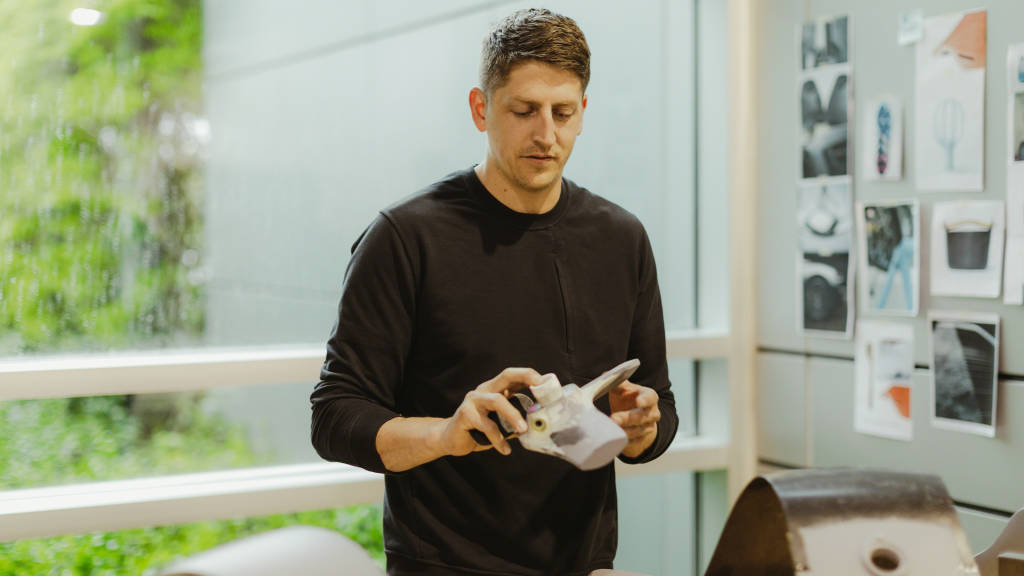
But the team felt convinced, they had not only identified the right problem; they also had the right context and the right people assembled. “There was a real clarity to working on this project,” says Spoelhof. “Everything we did was for the sake of the chair. Every decision we made was to make it better and more simple.”
From the start, there was a clear mission: Build a chair that cradles you based on the inputs you give it, not on any mechanical adjustments you have to make. The breakthrough came from studying the properties of carbon fiber. An experiment to understand the material and process had already resulted in the light and strong Coalesse stacking chair, LessThanFive.
“If we can provide advanced performance and support in a simpler system for people, then we’ve done our jobs well.”
SILQ is extremely strong, incredibly thin and highly responsive. Headlines already call it “revolutionary,” “the future of office seating,” and a chair “you’ll never want to get out of.”
“When people sit in it and recline and feel the floating motion, they can tell it’s following them,” says Deevers. “That’s not an accident. We labored over where and how it moves so it would change rates of resistance depending on the person’s stature and posture to make it easier for people. The engineering and the design, they’re inseparable because of that drive to make it simpler.”
“SILQ is a testament to the mindset of innovation.”
Once the team got to work, SILQ developed at blistering speed—from forming a team to completed product in just 18 months. Smith says it started with a series of small bets—diversified bets helping to spread the risk—that eventually led to a well-informed investment.
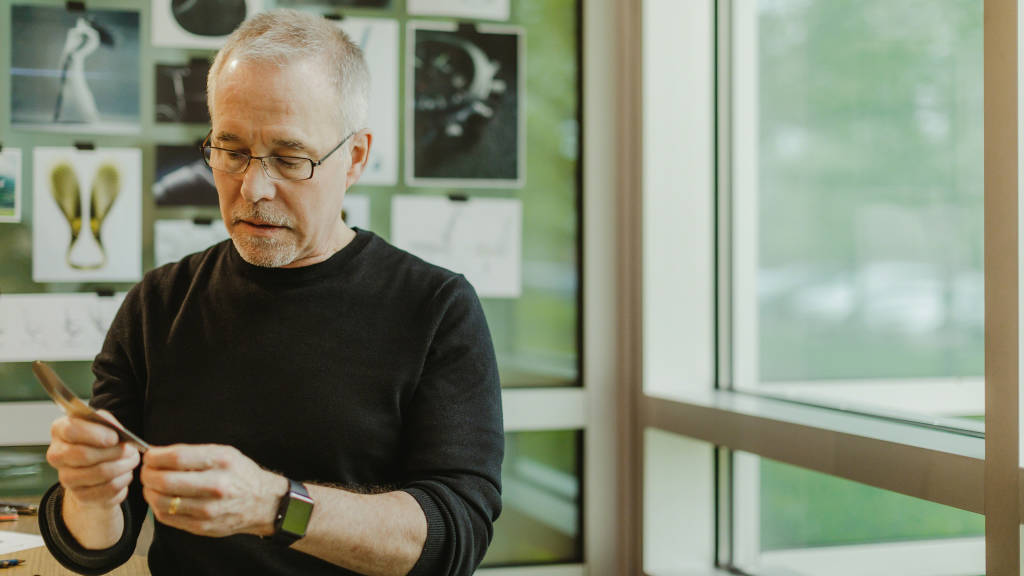
“It demanded courage. We couldn’t eliminate risk. Risks were taken with some knowledge, but we didn’t know everything,” Smith explains. With every bet, the team learned more, making prototypes and models as fast as they could. Thanks to their earlier explorations into materials, technology and human behavior, they were able to move quickly. First, using carbon fiber, they figured out how to build a simple system where the material becomes the mechanism—a chair that was more organism than machine. The solution came at the right time as people were beginning to work in new ways, moving throughout the office more frequently and spending less time at a designated space.
“It was sometimes deflating. Then it was exhilarating.”
But, building a simple system with carbon fiber was just the first step. Ludwig says invention is the creation of something new, but to innovate you actually have to develop something that can impact lots of people’s lives. Experience in watching how people work and a dose of intuition told the team that many people would want a chair that responds to them uniquely without making multiple adjustments—but carbon fiber chairs would not be accessible to everyone—it’s an expensive process.
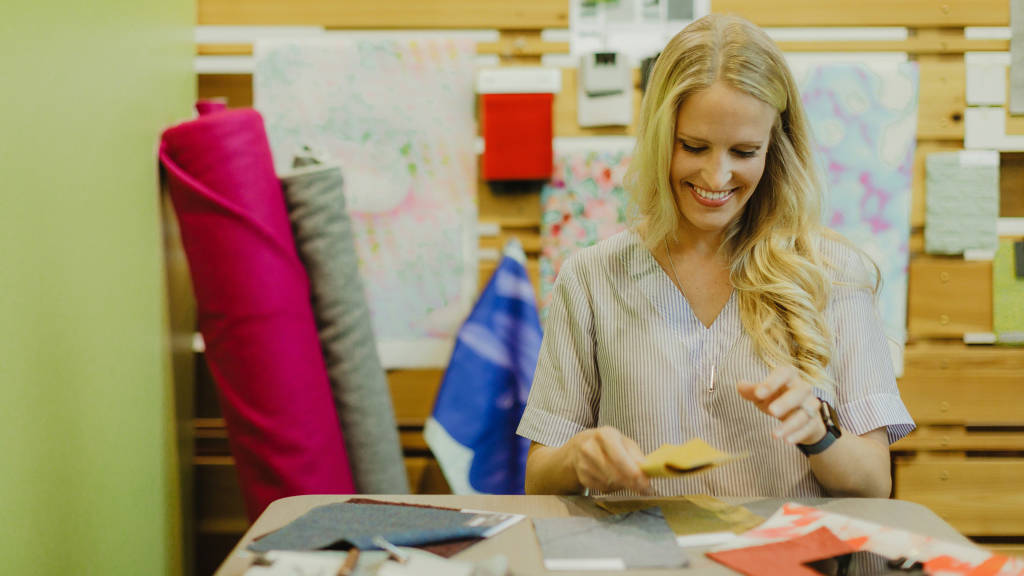
The team felt they couldn’t limit SILQ to a premium solution. So, Ludwig went back to his team to ask them to solve a new problem: Find a way to create SILQ using something that replicates the properties of carbon fiber, but doesn’t cost as much. It would take a second breakthrough, now a patent-pending process, to create SILQ using a high-performance polymer that’s a fraction of the cost of carbon fiber and makes it available to everyone.
“To me, looking back on it, it’s one of the best things that could have happened to me in my career,” says Deevers. “We got to create a new material composition and a new process. There is nothing cooler than that.”
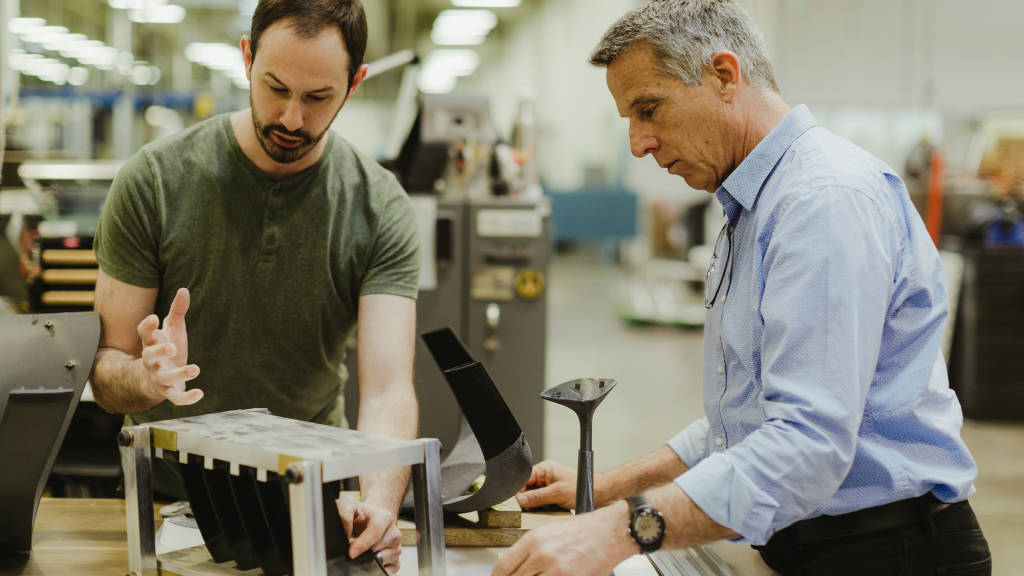
“We’d be crazy to ignore the impact of SILQ beyond the chair itself.”
For this team, SILQ is not an endpoint. It’s a very exciting beginning.
“When we show people SILQ for the first time, they’re delighted. It happens over and over again. That’s astounding to me,” says Spoelhof. He says these kinds of breakthroughs are supposed to happen once a decade in a person’s career. But what the team knows now can shatter that old standard.
“How we got there and the thing itself are new tools in our toolbox,” said Deevers. “We can make things and do things we never thought possible. So, now we step back and say, ‘Okay, what can we do next?’”
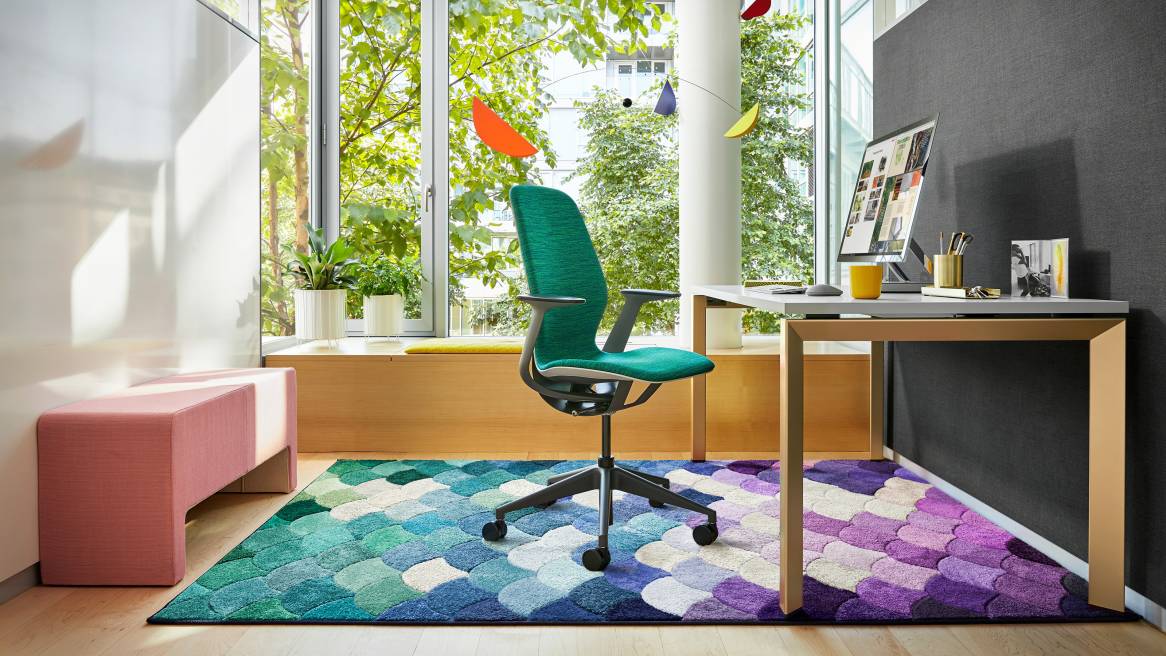
Innovation. Artistry. Performance.
SILQ is designed for people on the move. Workers who spend their days going from one meeting or activity to another are less likely to sit at an assigned desk all day. They have less time to adjust mechanisms and need an office chair that is intuitive to use.
“SILQ makes it easy to get comfortable quickly,” says SILQ Product Manager Karly Williamson. “Whether you’re collaborating with another colleague, working with your team or settling into a mobile touchdown space, the simplicity of SILQ means anyone who sits in it is going to be supported and delighted no matter where or how they are working. Its intuitive design means performance and comfort is unique to each person—height is the only adjustment you need to make.”
The sleek profile and clean lines of the chair create a canvas for individual expression. The wide variety of material and digital-printing combinations allows interior designers to create virtually limitless bespoke versions for their clients.
LATEST PODCAST
Listen to Steelcase 360 Real Time to hear SILQ team members share random acts of innovation that ended up a part of the final design.

